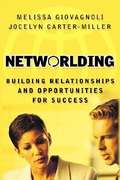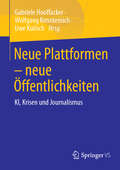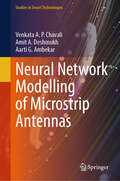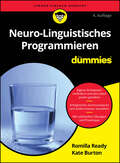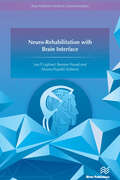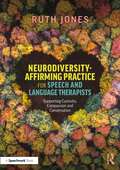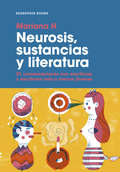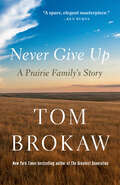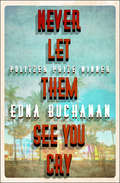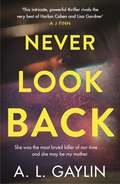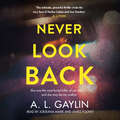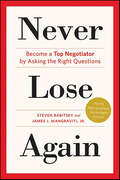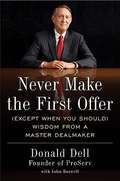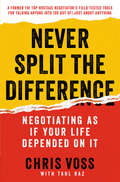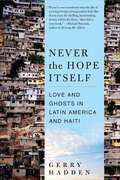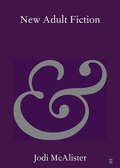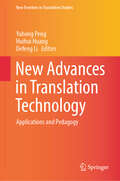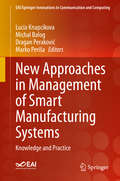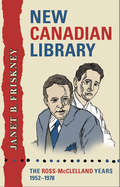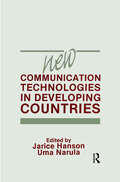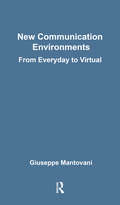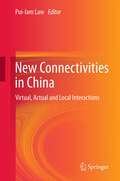- Table View
- List View
Networlding: Building Relationships and Opportunities for Success
by Melissa Giovagnoli Jocelyn Carter-MillerHow to buid the mutually beneficial relationships that are the real keys to job satisfaction, career advancement, and personal fulfillment in the 21st century.
Neue Plattformen – neue Öffentlichkeiten: KI, Krisen und Journalismus
by Gabriele Hooffacker Wolfgang Kenntemich Uwe KulischAlgorithmen und Künstliche Intelligenz wie die generative Sprach-KI ChatGPT übernehmen journalistische und publizistische Aufgaben – bei der Recherche, bei Produktion und Distribution. Wie ist es um die Zukunft des Journalismus unter den rasant sich verändernden Rahmenbedingungen bestellt? Worauf müssen sich Medienschaffende und Rezipienten einstellen? Wie können Medien auch in Krisenzeiten möglichst unabhängig bleiben und weiterhin Voraussetzung für eine funktionierende Demokratie sein? Der Band versammelt Beiträge zur Fachtagung "Neue Plattformen – neue Öffentlichkeiten" im September 2023 an der HTWK Leipzig.
Neural Network Modelling of Microstrip Antennas (Studies in Smart Technologies)
by Amit A. Deshmukh Venkata A. Chavali Aarti G. AmbekarThis book explores various designs of wideband and circularly polarized slot-cut microstrip antennas realized using artificial neural network (ANN) modelling approach. The ANN modelling has been employed in variety of application in wireless domain. In this book, ANNs tools are used for design and predicting the antenna behaviour as well as tailoring designs as per specific frequency requirements. The book presents various designs employing regular shapes like, rectangular, circular and modified compact shapes like, semi-circular. The neural network approach used in this book achieves accurate antenna designs for wide frequency range and substrate parameters, based on the intended application, thus demonstrating the effectiveness of predictive modelling in developing the wideband and circularly polarized antennas.
Neuro-Linguistisches Programmieren für Dummies (Für Dummies)
by Kate Burton Romilla ReadyÖffnen Sie Ihr Denken für neue M??glichkeiten! M??chten Sie andere Menschen besser verstehen und sich ihnen gegenüber besser verständlich machen? Dann ist dieses Buch genau das richtige für Sie. Romilla Ready und Kate Burton zeigen Ihnen, wie Sie mit NLP Ihre Kommunikation mit anderen erfolgreich gestalten k??nnen und Ihre Ziele leichter erreichen. Sie erfahren, was es mit »Landkarten«, »Ankern«, »Zeitreisen« oder »Rapport« auf sich hat, und werden schon bald merken, wie Sie einen neuen Blick auf Ihre Umwelt werfen und wie positiv sich Ihre Kommunikation mit anderen entwickelt. Sie erfahren Wie Sie Ihre Ziele mit neuer Energie und Überzeugung erreichen Wie Sie sich Geh??r für Ihre Botschaft verschaffen Wie Sie Zweifel überwinden und mehr Zufriedenheit erlangen
Neuro-Rehabilitation with Brain Interface (River Publishers Series In Communications Ser.)
by Ramjee Prasad Silvano Pupolin Leo P. LigthartIn recent years, major results were reported on Brain-Computer Interface / Brain-Machine Interface (BCI/BMI) applied to rehabilitation in scientific reports and papers. This subject received much attention within the Society on Communication, Navigation, Sensing and Services (CONASENSE) during the period 2013-2015. Describing the state of the art on various BCI/BMI activities related to neuro-rehabilitation is the central theme of this book.The latest insights coming from neurophysiologists, neuropsychologists, ICT experts specialized in clinical data management and from representatives of patient organizations are elucidated and new ways for “BCI/BMI applied to rehabilitation” using advanced ICT are introduced. The book describes the latest progress in and is an appeal for an approach leading to more cost-saving multi-disciplinary neuro-rehabilitation. This book covers the following topics: • Overview on BCI/BMI applied to rehabilitation• ICT for Neuro-rehabilitation• ICT for new generation prostheses• Gaze tracking, facial orientation determination, face and emotion recognition in 3D space for neuro-rehabilitation applications• Integrated perspective for future wide spread integration of motor neuro-rehabilitation• Ethical issues in the use of Information and Communication Technologies in the health care of patients with neurological disorders
Neurodiversity-Affirming Practice for Speech and Language Therapists: Supporting Curiosity, Compassion and Conversation
by Ruth JonesAre you a speech and language therapist (SLT) working independently, within a speech and language therapy team, or in training? Do you, or might you work with autistic or other neurodivergent people? This book will help you understand the changing narrative around how we support neurodivergent individuals, how to sit with complex thoughts and feelings you may have, and how to grow your capacity to unlearn, adapt and shift your values and practice.This essential guide considers what neurodiversity is and what it means to practice in a neurodiversity-affirming way, considering why we should be doing so and, importantly, how to do it. The book moves through the context of neurodiversity in recent times and considers key historical approaches within speech and language therapy. Chapters offer space for reflective practice based on what we know now, for both individual reflection and with colleagues as part of a wider team, before introducing practical strategies to challenge and change how we work with neurodivergent individuals. Throughout, the voices of autistic and ADHD SLTs are included and amplified, sharing their lived experiences and perspectives to further support teams to develop neurodiversity-informed practice.This book offers a safe and supportive space to explore a topic that can be uncomfortable and scary but must be delved into to provide neurodivergent people with access to therapists with knowledge, skills, and advocacy approaches to best meet their needs. It will be crucial reading for all practising and training speech and language therapists.
Neurosis, sustancias y literatura. 21 conversaciones con escritoras y escritores más o menos jóvenes
by Mariana HEsto no es una antología, ni mucho menos un canon. Esto es un bestiario. Aquí se reúnen, acaso, los más salvajes, los más sutiles, los más obsesivos, los más anfibios, los más ellos mismos y ellas mismas. Éstos son los 21 autores con los que Mariana H quiso conversar, por curiosidad, por morbo, por capricho, por admiración y por asombro. Platicaron sobre el mundo o el mundillo literario, sobre las listas y los premios, sobre el amor, sobre el placer o el parto de la escritura, sobre ansiolíticos y estimulantes, sobre el kafkiano proceso de publicar en México, sobre Dios y los lectores. Estos 21 escritores y escritoras crecieron en los ochenta y los noventa, cuando el mundo era otro, más lento y menos público. Quizá sólo eso los une, eso y el triste código genético compartido de la violencia. Y, por supuesto, su apuesta a todo o nada por la literatura. Jazmina Barrera Luis Jorge Boone Hernán Bravo Varela Jorge Comensal Guillermo Espinosa Estrada Verónica Gerber Bicecci Laia Jufresa Rodrigo Márquez Tizano Fernanda Melchor Jaime Mesa Emiliano Monge Luis Muñoz Oliveira Antonio Ortuño Diego Enrique Osorno Pergentino José Eduardo Rabasa Antonio Ramos Revillas Daniel Saldaña París César Tejeda Sara Uribe Carlos Velázquez
Never Be Lied To Again: How to Get the Truth In 5 Minutes or Less in Any Conversation or Situation
by David J. LiebermanHow many times have you been manipulated or taken advantage of by someone's lies? Are you tired of being deceived, tricked, and fooled? Finally, renowned behaviorist David J. Lieberman shows you how to stop the lies and uncover the truth-- in any conversation or situation. In a simple, user-friendly format, Dr. Lieberman gives you the tools to determine, with uncanny accuracy, if you are being lied to.Utilizing newly developed techniques in hypnosis and psycholinguistics, this book also shows you how to easily influence anyone to tell the truth-- within minutes. Use it in any situation, from casual conversation to in-depth interviews. Never Be Lied to Again is chock-full of colorful examples and engaging scenarios to help you keep from being taken advantage of and give you that extra edge. Use these groundbreaking techniques to take control of every personal and business situation...and never be lied to again.
Never Enough Time: Communication and the Construction of Time in an Attention Economy (Routledge Research in Communication Studies)
by Brian H. SpitzbergNever Enough Time discusses the directional and irreversible nature of time, its relationship to information and entropy, the deep time history of communication from the genesis of language to today, and the extent to which we occupy time through our communication.Drawing together studies from a wide variety of disciplines and topics that provide quantitative estimates of how much daily time is expended communicating and relating to others, the author demonstrates that in an increasingly accelerating, mediated, and information-overloaded ecosystem, we spend most of our time, both socially and occupationally, engaged in various forms of communication. He examines the nature of time in the context of our increasingly overloaded and mediated information and communication ecosystem, the extent to which our increasing screen time displaces face-to-face interaction, and the implications this trend has for our quality and quantity of life, particularly for younger populations. In addition, a case is made for the importance of developing standardized measures of time, made all the more feasible with digital technologies already available for quantifying behavior at population scales.This book will appeal to graduate students, scholars, and researchers interested in time, communication theory, new media and media studies, and communication and personal relationships.
Never Give Up: A Prairie Family's Story
by Tom BrokawIn this moving story, the New York Times bestselling author of The Greatest Generation chronicles the values and lessons he absorbed from his parents and other people who worked hard to build lives on the prairie during the first half of the twentieth century. &“In our fractured times, this inspiring book reminds us how we can rise to meet our current challenges by honoring the fortitude of the generations before us.&”—Walter IsaacsonTom&’s father, Red, left school in the second grade to work in the family hotel—the Brokaw House, established in Bristol, South Dakota, by R. P. Brokaw in 1883. Eventually, through work on construction jobs, Red developed an exceptional talent for machines. Tom&’s mother, Jean, was the daughter of a farmer who lost everything during the Great Depression. They met after a high school play, when Jean played the lead and Red fell in love with her from the audience. Although they didn&’t have much money early in their marriage, especially once they had three boys at home, Red&’s philosophy of &“Never give up&” served them well. His big break came after World War II, when he went to work for the Army Corps of Engineers building great dams across the Missouri River, magnificent structures like the Fort Randall and the Gavins Point dams. Late in life, Red surprised his family by recording his memories of the hard times of his early life, reflections that inspired this book.Tom Brokaw is known as one of the most successful people in broadcast journalism. Throughout his legendary career, Brokaw has always asked what we can learn from world events and from our history. Within Never Give Up is one answer, a portrait of the resilience and respect for others at the heart of one American family&’s story.
Never Let Them See You Cry: More From Miami, America's Hottest Beat
by Edna BuchananTrue stories of crime in Miami by the Pulitzer Prize–winning author of The Corpse Had a Familiar Face. Set against the neon backdrop of the South Florida city where Miami Herald reporter Edna Buchanan covered the police beat for nearly two decades, this memoir collects true tales of both heroes and villains—from the heartbreaking to the heartwarming to the outright hilarious. &“A flurry of cases—of criminal Christmases, historic crimes, homicidal love, cop heroes, rescuers, odd occurrences (such as that of the barbiturate-soaked gunman who took 26 direct hits from cops&’ guns and kept shooting until a 27th round took him down) . . . a generous bonanza for crime buffs, presented by one of the sharpest writers in the field.&” —Kirkus Reviews
Never Look Back: She was the most brutal serial killer of our time. And she may have been my mother.
by A.L. Gaylin'Aflame with tension. An intricate, powerful thriller - rivals the very best of Harlan Coben and Lisa Gardner' AJ Finn, author of THE WOMAN IN THE WINDOW*****************She was the most brutal killer of our time. And she may have been my mother...When website columnist Robin Diamond is contacted by true crime podcast producer Quentin Garrison, she assumes it's a business matter. It's not. Quentin's podcast, Closure, focuses on a series of murders in the 1970s, committed by teen couple April Cooper and Gabriel LeRoy. It seems that Quentin has reason to believe Robin's own mother may be intimately connected with the killings.Robin thinks Quentin's claim is absurd. But is it? The more she researches the Cooper/LeRoy murders herself, the more disturbed she becomes by what she finds. Living just a few blocks from her, Robin's beloved parents are the one absolute she's always been able to rely upon, especially now amid rising doubts about her husband and frequent threats from internet trolls. Robin knows her mother better than anyone.But then her parents are brutally attacked, and Robin realises she doesn't know the truth at all...*****************'Completely absorbing with a knock-out twist' Harlan Coben'Gaylin is an expert at acute emotional observation combined with seamless plotting' Alex Marwood'AL Gaylin is at the top of her game, crafting exhilarating and audacious crime novels that are both rich in character and rivetingly told. They are, quite simply, not to be missed' Megan Abbott'AL Gaylin is a storyteller guaranteed to keep you up at night' Laura Lippman'AL Gaylin is a great storyteller' Mark Billingham'A fiendishly well-told thriller that deepens its grip the faster you read - I loved it' Louise CandlishIf you love Serial, S-Town, Clare Mackintosh, Cara Hunter, KL Slater or Lisa Jewell, you will be utterly gripped by this psychological thriller with a twist you'll never see coming...
Never Look Back: She was the most brutal serial killer of our time. And she may have been my mother.
by A.L. GaylinShe was the most brutal killer of our time. And she may have been my mother...When website columnist Robin Diamond is contacted by true crime podcast producer Quentin Garrison, she assumes it's a business matter. It's not. Quentin's podcast, Closure, focuses on a series of murders in the 1970s, committed by teen couple April Cooper and Gabriel LeRoy. It seems that Quentin has reason to believe Robin's own mother may be intimately connected with the killings.Robin thinks Quentin's claim is absurd. But is it? The more she researches the Cooper/LeRoy murders herself, the more disturbed she becomes by what she finds. Living just a few blocks from her, Robin's beloved parents are the one absolute she's always been able to rely upon, especially now amid rising doubts about her husband and frequent threats from internet trolls. Robin knows her mother better than anyone.But then her parents are brutally attacked, and Robin realises she doesn't know the truth at all...
Never Lose Again: Become a Top Negotiator by Asking the Right Questions
by Steven Babitsky James J. Mangraviti Jr.The Most Practical Book on Negotiating Ever WrittenNegotiating is an art. It's complicated. To become an exceptional negotiator traditionally requires years of experience in negotiations. But that doesn't mean that most people can't quickly and easily learn proven negotiating skill and techniques if someone shows them what to do. This book does exactly that. Never Lose Again reveals a simple but remarkably effective set of fifty questions that anyone can immediately use to become far better negotiators. The fifty questions apply to all types of negotiation situations, from conflicts like buying a home or car to business transactions of all kinds. Each question has been designed to put you in the best position possible, helping you to avoid tricks, break deadlocks, discover conflict and dispute resolutions, and find hidden deals in all types of negotiations.No other book on the market distills the key negotiation principles into such a simply, effective, and instantly usable form. By learning to use these questions, you can start thinking like expert negotiators and make better deals for yourself, your family, and your business.
Never Make the First Offer
by Donald DellDonald Dell is a legend in the sports agent business. He's been at it for almost forty years, with a record of successful deals that puts him in a league of his own. His unique guide to negotiating includes examples from Dell's dealings with some of the biggest names in sports, stars like Michael Jordon, Jimmy Connors, Andy Roddick, and Patrick Ewing. The audiobook brings the inner workings of the negotiating room to life, from the intense all-night wrangling sessions to the devious battles of wits. There's plenty of backstabbing, but also moments of glory earned by a brilliant negotiator at the top of his game. Dell covers the various aspects of negotiations, in sports and in a more general context, such as understanding what's important, playing to your audience, gaining leverage and getting agreement. This includes such "life skills" as gaining trust, building relationships, and getting in touch with your "inner competitor. " They also provide in-depth prescriptive instruction in sports agentry, explaining such specifics as the standard player agreement, licensing agreements, and stadium naming rights contracts. Dell also shares his eight (sort of) absolute laws of negotiating, including: * Never make the first offer: The more information you can get from the other side before you name a number, the better your position. * Always be prepared to walk away: that gives you leverage. Conversely, if the other party senses you're negotiating from fear, you are immediately at a big disadvantage. * In every negotiation there is a moment of truth: The key is to position your offer so that when it gets to that point, it's hard for them to say no.
Never Split the Difference: Negotiating As If Your Life Depended On It
by Tahl Raz Chris VossA former international hostage negotiator for the FBI offers a new, field-tested approach to high-stakes negotiations—whether in the boardroom or at home.After a stint policing the rough streets of Kansas City, Missouri, Chris Voss joined the FBI, where his career as a hostage negotiator brought him face-to-face with a range of criminals, including bank robbers and terrorists. Reaching the pinnacle of his profession, he became the FBI’s lead international kidnapping negotiator. Never Split the Difference takes you inside the world of high-stakes negotiations and into Voss’s head, revealing the skills that helped him and his colleagues succeed where it mattered most: saving lives. In this practical guide, he shares the nine effective principles—counterintuitive tactics and strategies—you too can use to become more persuasive in both your professional and personal life.Life is a series of negotiations you should be prepared for: buying a car, negotiating a salary, buying a home, renegotiating rent, deliberating with your partner. Taking emotional intelligence and intuition to the next level, Never Split the Difference gives you the competitive edge in any discussion.
Never Stop: A Memoir
by Simba SanaA memoir from the cofounder of the nation&’s largest black-owned chain of bookstores. &“A candid testimony of struggle and achievement.&” —Kirkus Reviews Never Stop is the wrenching memoir of Simba Sana, the cofounder and former leader of Karibu Books, a major indie-bookselling phenomenon and perhaps the most successful black-owned company in the history of the book industry. In this memoir, Sana reveals how his experience with Karibu jumpstarted his lifelong journey to better understanding himself, human nature, faith, and American culture—which ultimately helped him develop the powerful personal philosophy that drives his life today. Born Bernard Sutton in Washington, DC, Sana grew up in the cycle of poverty and violence that dominated inner-city life in the seventies and eighties. Sana&’s academic success got him into college, where his life increasingly embodied the contradictions that plagued his youth. Committed to self-improvement and self-discipline, he grew into a successful businessman while becoming an impassioned Black Nationalist and Pan-Africanist. He lived the corporate life at Ernst & Young by day while leading radical consciousness-raising groups by night. Building Karibu became Sana&’s opportunity to bind the disparate elements of his life together. Ultimately, though, the paradoxes in his identity and his accumulated emotional wounds confounded his effort to overcome his business reversals, and everything Sana built—his marriage, family, and business—was lost in an incredibly brief period of time. Sana had to rebuild his life—and his identity—and set out to do so in a way that focused principally on the meaning and importance of love. &“Hands down one of the best explorations into the Black male psyche I&’ve ever read.&” —Essence
Never the Hope Itself: Love and Ghosts in Latin America and Haiti
by Gerry HaddenA former NPR correspondent takes you into his own ghost-filled life as he reports on a region in turmoil. Gerry Hadden was training to become a Buddhist monk when opportunity came knocking: the offer of a dream job as NPR’s correspondent for Latin America. Arriving in Mexico in 2000 during the nation’s first democratic transition of power, he witnesses both hope and uncertainty. But after 9/11, he finds himself documenting overlooked yet extraordinary events in a forgotten political landscape. As he reports on Colombia’s drug wars, Guatemala’s deleterious emigration, and Haiti’s bloody rebellion, Hadden must also make a home for himself in Mexico City, coming to terms with its ghosts and chasing down the love of his life, in a riveting narrative that reveals the human heart at the center of international affairs.
New Adult Fiction (Elements in Publishing and Book Culture)
by Jodi McAlisterThe term 'new adult' was coined in 2009 by St Martin's Press, when they sought submissions for a contest for 'fiction similar to YA that can be published and marketed as adult – a sort of 'older YA' or 'new adult'.' However, the literary category that later emerged bore less resemblance to young adult fiction and instead became a sub-genre of another major popular genre: romance. This Element uses new adult fiction as a case study to explore how genres develop in the twenty-first-century literary marketplace. It traces new adult's evolution through three key stages in order to demonstrate the fluidity that characterises contemporary genres. It argues for greater consideration of paratextual factors in studies of genre. Using a genre worlds approach, it contends that in order to productively examine genre, we must consider industrial and social factors as well as texts.
New Advances in Translation Technology: Applications and Pedagogy (New Frontiers in Translation Studies)
by Defeng Li Yuhong Peng Huihui HuangFrom using machine learning to shave seconds off translations, to using natural language processing for accurate real-time translation services, this book covers all the aspects. The world of translation technology is ever-evolving, making the task of staying up to date with the most advanced methods a daunting yet rewarding undertaking. That is why we have edited this book—to provide readers with an up-to-date guide to the new advances in translation technology. In this book, readers can expect to find a comprehensive overview of all the latest developments in the field of translation technology. Not only that, the authors dive into the exciting possibilities of artificial intelligence in translation, exploring its potential to revolutionize the way languages are translated and understood. The authors also explore aspects of the teaching of translation technology. Teaching translation technology to students is essential in ensuring the future of this field. With advances in technology such as machine learning, natural language processing, and artificial intelligence, it is important to equip students with the skills to keep up with the latest developments in the field. This book is the definitive guide to translation technology and all of its associated potential. With chapters written by leading translation technology experts and thought leaders, this book is an essential point of reference for anyone looking to understand the breathtaking potential of translation technology.
New Approaches in Management of Smart Manufacturing Systems: Knowledge and Practice (EAI/Springer Innovations in Communication and Computing)
by Michal Balog Lucia Knapcikova Dragan Peraković Marko PerišaThis book provides a comprehensive and effective exchange of information on current developments in the management of manufacturing systems and Industry 4.0. The book aims to establish channels of communication and disseminate knowledge among professionals working in manufacturing and related institutions. In the book, researchers, academicians and practitioners in relevant fields share their knowledge from the sectors of management of manufacturing systems. The chapters were selected from several conferences in the field, with the topics including management of manufacturing systems with support for Industry 4.0, logistics and intelligent manufacturing systems and applications, cooperation management, and its effective applications. The book also includes case studies in logistics, RFID applications, and economic impacts in logistics, ICT support for industry 4.0, industrial and smart logistics, intelligent manufacturing systems and applications
New Canadian Library
by Janet FriskneyIn the mid-1950s, much Canadian literature was out of print, making it relatively inaccessible to readers, including those studying the subject in schools and universities. When English professor Malcolm Ross approached Toronto publisher Jack McClelland in 1952 to propose a Canadian literary reprint series, it was still the accepted wisdom among publishers that Canadian literature was of insufficient interest to the educational market to merit any great publishing risks. Eventually convinced by Ross that a latent market for Canadian literary reprints did indeed exist, McClelland & Stewart launched the New Canadian Library (NCL) series in 1958, with Ross as its general editor. In 2008, the NCL will celebrate a half-century of publication.In New Canadian Library, Janet B. Friskney takes the reader through the early history of the NCL series, focusing on the period up to 1978 when Malcolm Ross retired as general editor. A wealth of archival resources, published reviews, and the NCL volumes themselves are used to survey the working relationship between Ross and McClelland, as well as the collaborative participation of those who, through the middle decades of the twentieth century, were committed to studying and nurturing Canada's literary heritage. To place the New Canadian Library in its proper historical context, Friskney examines the simultaneous development of Canadian literary studies as a legitimate area of research and teaching in academe and acknowledges the NCL as a milestone in Canadian publishing history.
New Communication Technologies in Developing Countries: New Communication Technologies In Developing Countries (Routledge Communication Series)
by Jarice Hanson Uma NarulaThis volume explores how a number of developing countries -- including India, Malaysia, Columbia, Brazil, and Saudi Arabia -- are responding to the pressures of the information society. Infrastructural development, policies, and social systems are investigated, and models of information technologies and society are proposed in order to better reference the differences and similarities among the nations profiled. The authors identify the social technology perspective via the assimilation of technology in lifestyles and social systems. From this perspective, the diffusion of technologies is analyzed with a critical eye for theories of culture lag, diffusion and innovation, and technological determinism and liberalism. The social perspective is a new addition to development studies, and the reader may see how, as the global information society comes into focus, the social dimensions are more important than some theorists originally envisioned.
New Communications Environments: From Everyday To Virtual
by Giuseppe MantovaniThis multi-disciplinary book develops three intertwined themes: the perspective of situated action from cognitive science, a model of social context as a framework for inspiring artifact use and starting from it, and the individual and organizational impact of the new electronic environments of communication. Using plenty of up-to-date references from different scientific disciplines such as HCI, computer-mediated communication, cognitive sciences, social psychology, cultural anthropology and research in decision making, the book challenges older models of communication as information transfer and discusses the new communication environments.
New Connectivities in China
by Pui-Lam LawThe fast diffusion of information and communication technologies (ICTs) in China has brought forth new forms of connection among the Chinese and has changed their social lives. Virtual networks have been developed and in turn have led to the formation of networks in the actual world. This collection explores the resultant complications in the relationship between virtual, actual, and local interactions. It discusses various aspects of the implications of the new connectivities on these three types of interactions in China. The topics examined include: the possibility of the development of civil society in China, the implications for the migrant workers in the south, the challenge posed to the traditional social order, and the relationship between the new connectivities and the Chinese social context.
